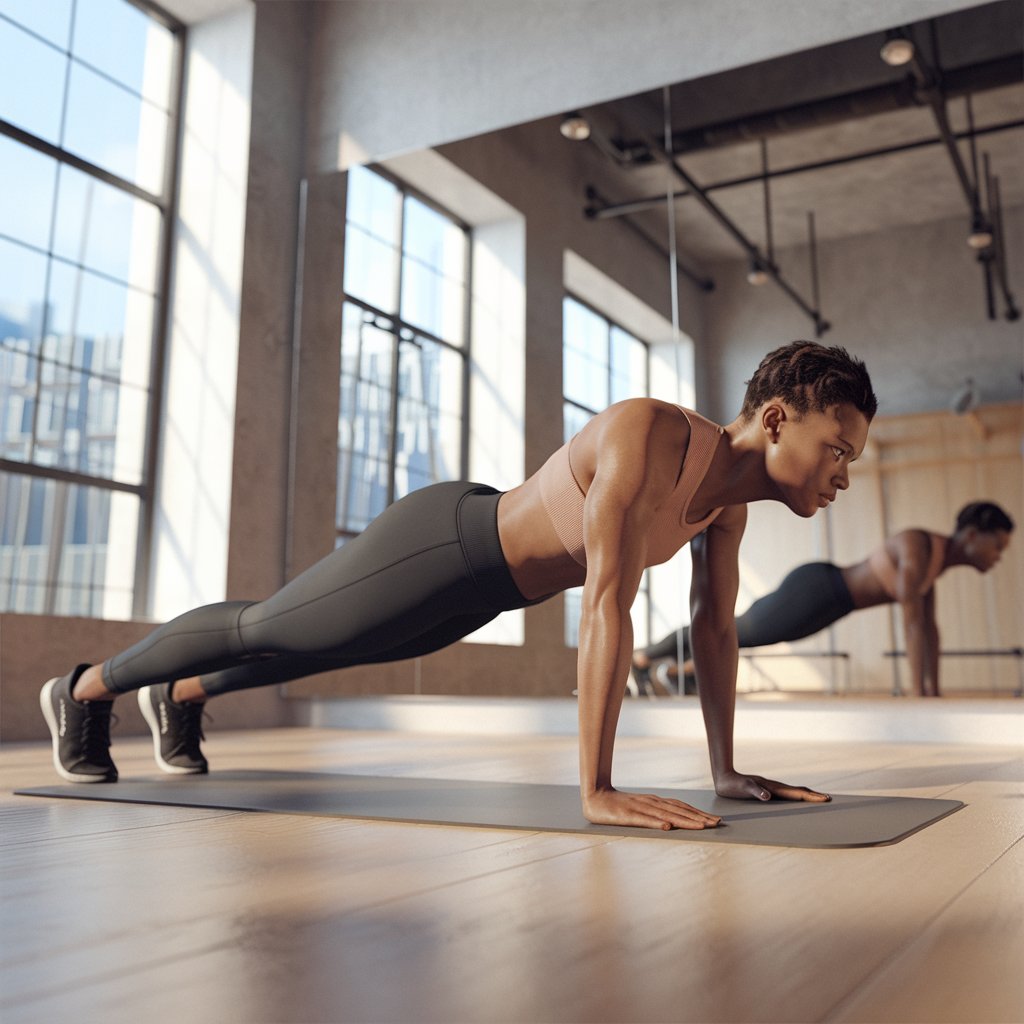
How to Do a Plank Correctly: Unearth the Magic Form
Discovering how to do a plank correctly is essential for getting the most out of this exercise while staying injury-free. Fitness professionals stress that proper form is critical for boosting core strength and stability. Explore methods to create a tailored fitness routine that elevates your workout and fortifies your core.
How to Do a Plank Correctly: Expert Advice on Form
The plank has earned a solid reputation for its ability to engage multiple core muscles at once. To grasp how to do a plank correctly, it is important to look closely at what happens to your body during the exercise. As you take the plank position, several major muscle groups are activated. The primary players include the rectus abdominis, transverse abdominis, and obliques, which work hard to keep your spine stable. At the same time, your glutes and shoulders help maintain your overall posture.
Studies reveal that holding this static position builds core strength, which serves as a crucial base for functional fitness. Research published in the Journal of Strength and Conditioning Research emphasizes the link between core stability and improved performance, whether in sports or day-to-day tasks. A stronger core translates to better posture, fewer instances of back pain, and improved athletic ability.
Unlike workouts focusing solely on flexibility or strength, the plank presents a unique challenge by demanding isometric strength—where your muscles hold tension without moving. This approach builds endurance and promotes stability, key to optimizing your overall movement. Tracking your progress can be a great motivation. Resources like MetersFit can help you observe your improvements, making how to do a plank correctly a part of your fitness evolution.
The Science Behind the Plank and Proper Technique
To truly understand how to do a plank correctly, it is beneficial to explore the science that informs this exercise. The plank is a core stabilization maneuver that taps into several muscle groups, primarily targeting your abs, shoulders, and glutes. Biomechanically, it strengthens core stability, fostering better postural alignment.
Research consistently shows that a robust core correlates to enhanced performance in sports and significantly decreases the likelihood of injuries. When you hold a plank, your body learns to coordinate muscle contractions, establishing a stable base that supports your spine. Any lapse in form can diminish these benefits.
To fine-tune the plank, adjusting your positioning is crucial. Your elbows should sit squarely under your shoulders, while your feet should be hip-width apart for effective weight distribution. Engage your core by drawing your belly button in toward your spine to stabilize your lower back, avoiding excessive dips or rises in your hips.
Research points out the importance of activating specific muscles, like the transverse abdominis, while holding a plank, as this markedly enhances its effectiveness. Being aware of your muscle engagement is vital in mastering how to do a plank correctly. Grasping the principles behind the plank can refine your technique and help maximize your overall fitness gains.
How to Do a Plank Correctly: Step-by-Step Guide
To execute a plank properly, start by selecting a flat surface. Lie *face down* on the ground and position yourself on your forearms. Your elbows should align straight beneath your shoulders, and your forearms should stay parallel. Make sure your body forms a straight line from the top of your head down to your heels, which is critical for effectively engaging your core and demonstrating how to do a plank correctly.
Now, it is time to activate your core muscles. Picture pulling your belly button toward your spine. This activation stabilizes your frame and prevents your hips from sagging or your glutes from rising too high. Keep breathing as you hold this pose; maintaining airflow is essential for endurance. While in the plank position, focus on tightening your glutes and legs, offering additional support for your core. Aim for a solid base without over-tensing your legs.
Pay attention to your neck; keep it in a neutral position. Avoid looking too far ahead or letting your head drop. Instead, focus your gaze on a spot a few inches in front of you on the floor. For tracking your progress and refining your technique, consider tools like MetersFit, which help monitor your muscle engagement and form effectively. Applying these steps will deepen your understanding of how to do a plank correctly and allow you to reap its full benefits.
For more insights on how planking exercises can impact your wellness, check out this study on scientific benefits.
Practical Exercises for a Stronger Core and Improved Planking
To master how to do a plank correctly, laying the groundwork with foundational exercises is key. A plank involves total body engagement that calls for strength, stability, and endurance. To cultivate a stronger core, consider some practical exercises that will enhance your plank form.
Start with simple core drills like the dead bug and bird-dog. These movements activate and stabilize key core muscles. For the dead bug, lie on your back, extend your arms and legs, and alternate lowering them while keeping a neutral spine. For the bird-dog, get on all fours, extend one arm and the opposite leg, then switch. These exercises strengthen the muscle coordination vital for effective planking.
As you advance, think about incorporating stability tools, such as a Swiss ball or resistance bands. These can add an extra challenge to your core training. For example, holding a plank with your feet on a Swiss ball can further engage your stabilizing muscles.
Do not forget to integrate variations like side planks and hollow holds. These tweaks teach your core to stabilize through different movements. Always focus on maintaining proper form to ensure you stay safe while perfecting how to do a plank correctly.
If you want to delve deeper into how core stability can improve your functional movement, visit core stability exercises. Regular practice of these activities will naturally enhance your ability to keep a proper plank position.
How to Do a Plank Correctly: Avoiding Mistakes for Safety
To learn how to do a plank correctly, it is vital to recognize and sidestep common mistakes that can derail your progress. Often, people overlook the essentials that make a plank both effective and safe.
Start by ensuring proper body alignment. Your elbows should be squarely under your shoulders to keep your body stable and evenly distribute weight. Your forearms need to rest flat on the ground, parallel to one another. Pay close attention to your hips, ensuring they neither sag down nor lift too high. Keeping a straight line from your head to your heels is imperative.
Another frequent mistake involves head positioning. Your neck should be kept neutral; avoid tilting your head up or down. Instead, look slightly forward while keeping your spine aligned. Ensure that your core remains engaged throughout the plank by pulling your belly button in toward your spine. This action boosts stability and minimizes strain on your lower back.
Lastly, do not forget about your legs. They should be engaged to curb any excessive swaying. As you hold the plank, focus on your breathing and resist the urge to rush. By diligently practicing how to do a plank correctly, you build a solid foundation for core strength. Remember, quality always outweighs quantity. For a thorough approach to enhancing core stability, learn more at Core Stability Exercises.
Final Words
Mastering the plank with correct form significantly supports your strength and guards against injury. Start tracking your fitness journey with tailored insights from MetersFit. Join the waitlist at [MetersFit Waitlist](https://metersfit.com/waitlist/) and witness genuine results in your pursuit of improved health.






